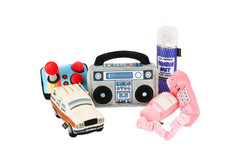Running with your dog can be a great way for you both to exercise and bond with each other. In order to make sure that you both have the best time it’s important that you run responsibly with your dog. That means understanding your dog and their behaviour.
When Can You Start Running with Your Dog?
Most dog breeds are fully grown after about a year. Before this time their bones are still developing, and their joints aren’t as sturdy as you might think. The growth plates on the end of its bones are still developing and are still soft, as they get older these harden and become stronger. During the first year you should build up the time of walking and running by your side slowly, without overdoing it. A long run on hard surfaces can result in long-term injuries, if you’re unsure how much exercise your puppy can cope with, it’s always best to check with a vet first.
While your puppy is still growing you’ll have plenty to keep you both busy. Use this time to train your dog how to walk and run by your side in a controlled environment. Once they have the hang of that you can introduce distractions such as other runners, other dogs and cyclists. “It’s vital that your dog is focused on you, your pace and running and isn’t going to suddenly decide it wants to chase a bike instead. Getting this training done early will save you a lot of time when your dog is fully grown and capable of going on those long runs,” says Bess Bellamy, pet care specialist and contributor to Last Minute Writing and Researchpapersuk.
Commands are Key
Training your dog, the right commands is going to make the difference between a good run and a disaster. Your dog needs to know when to run, when to wait and when to relax. If the dog only knows to run, you’ll soon find yourself being dragged across roads instead of waiting at traffic lights. Likewise, owners of male dogs will know that if you don’t get them in the running mode, they’ll be stopping at every lamppost to have a pee and your run won’t be quite as smooth as you’d hoped!
You can make teaching these commands a breeze by starting early and creating a routine. Dogs love routines, if they know that when you put your running shoes on that means it’s run time it will make those run-related commands much easier for them to remember. You should also ensure that when you are wanting a more relaxed walk that the routine is different, try a different lead/harness, different shoes for you and a different time of day. That way they’ll see the differences and think “right, this is a sniff walk not a run” therefore stopping you being dragged across the park at a ridiculous speed!
The Right Running Equipment
You no doubt have specific running shoes and a certain outfit that you wear for running. The same should apply to your dog. Certain leads such as retractable leads and leads that attach to your legs are not suitable for running. You should have a lead which is about 2-3 metres long, with reflective parts for those dark mornings/evenings and either hand held or a waist strap for you. There are also special running harnesses which you can purchase for your dog, this will also help them to recognise when it’s running time for you both.
The Health of Your Dog Comes First
Sometimes it isn’t safe to go for a run with your dog. Dogs can easily overheat, particularly large breeds or breeds with shorter muzzles. You can safely run with your dog between -10 and +15◦C. In higher temperatures make sure you run in the shade and only during the early morning or late evening. “If you’re running on tarmac or concrete do the palm test first, if you can’t keep your hand on it for 10 seconds, it’s too hot for dog paws,” adds Julie Garza, lifestyle writer for Draftbeyond and Writinity. No matter what the weather make sure that you have water with you for both you and the dog so neither of you get dehydrated.
Ensure Enjoyment for You and Your Dog!
Lastly, make sure that both you and your dog are enjoying yourselves. Dogs are likely to prefer softer ground to run on so they don’t damage their paws. Since your dog is exercising more you will need to check their food so that you are giving them the right amount. And finally, it’s important that you both take time to rest, they can get sore too so sometimes it’s good to put your feet and paws up! Your dog will show you when they are tired and need a break, look for the signs such as lagging behind or refusing to run. If you both listen to each other, you will both have a fantastic time running together.





